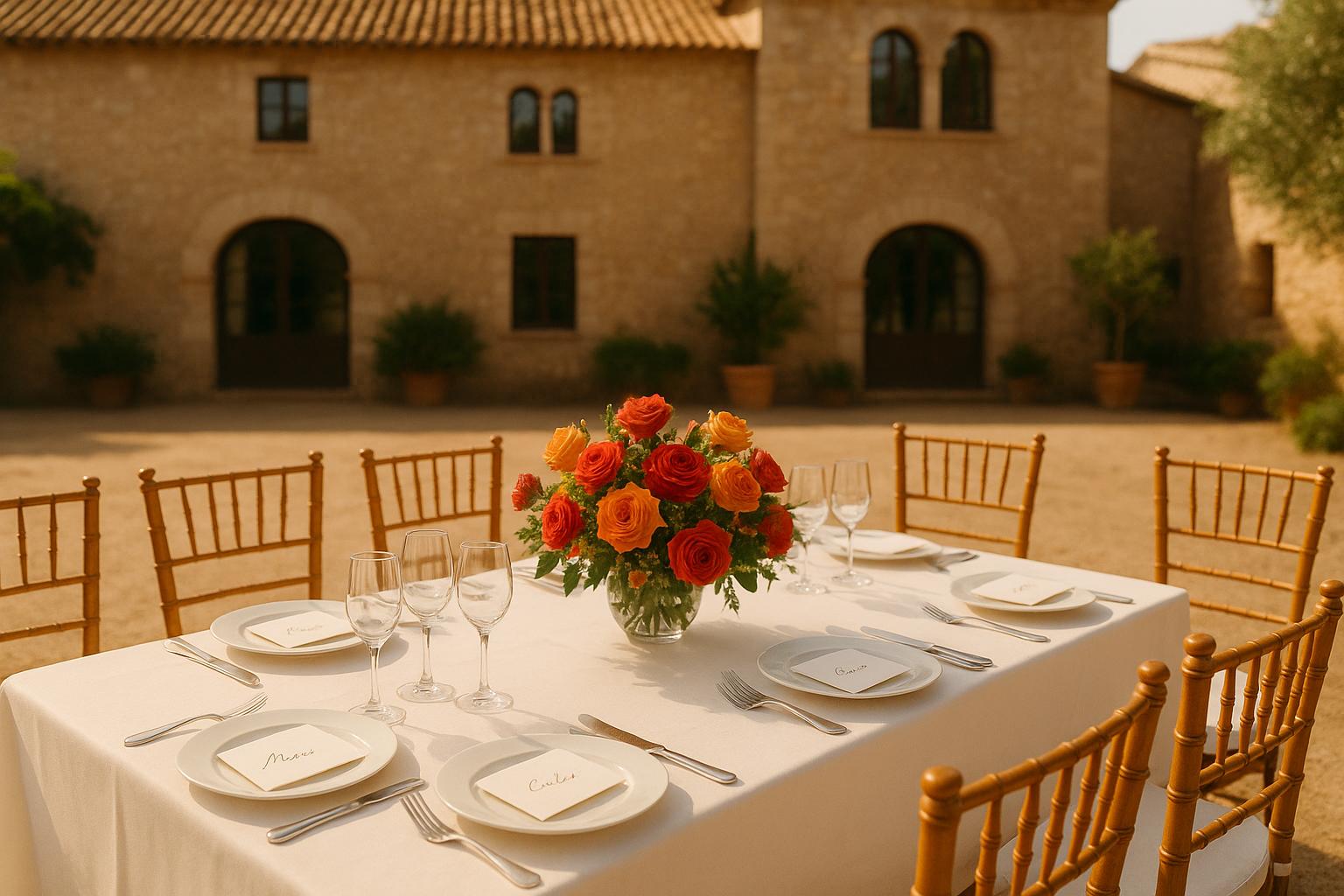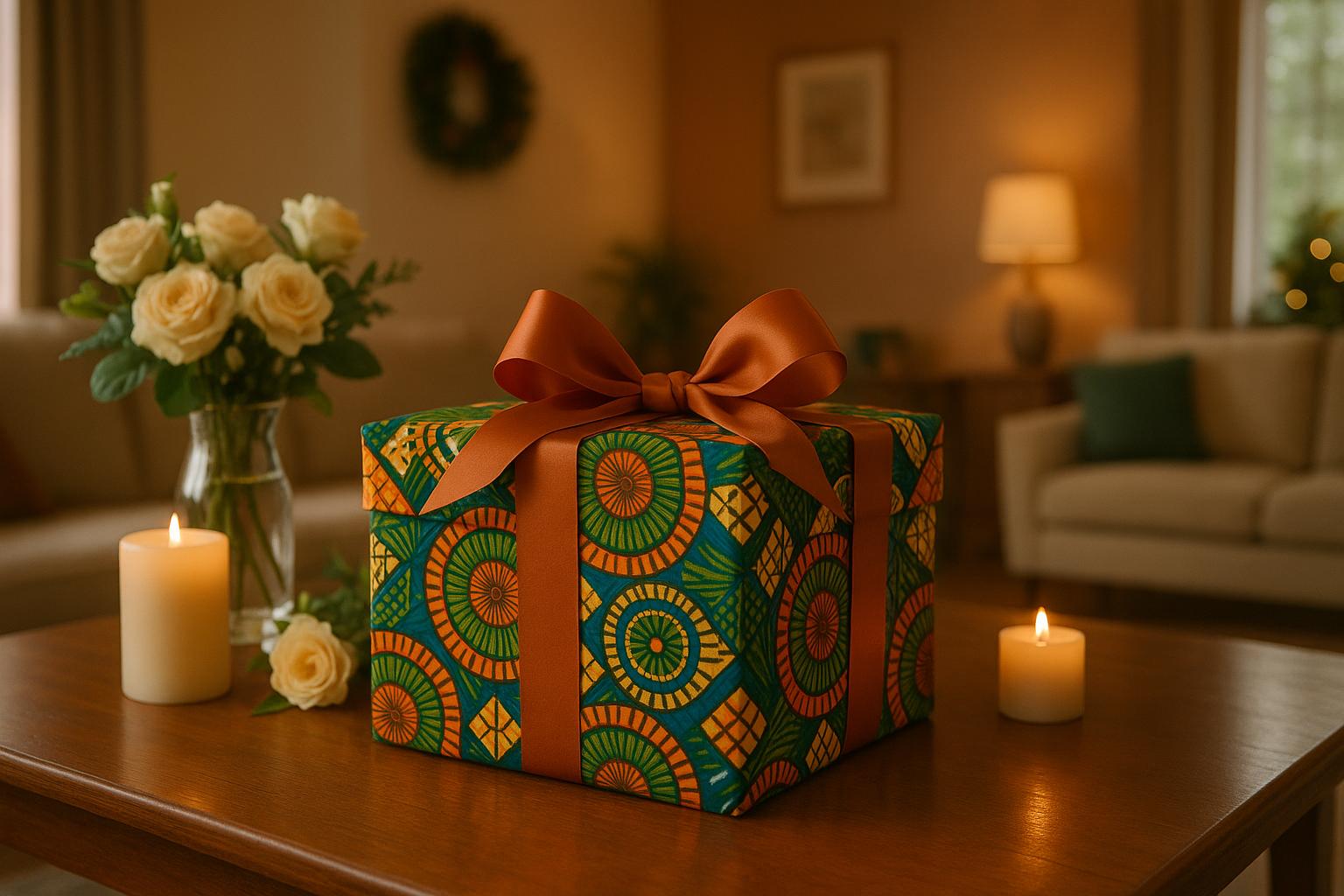
How Much to Give at a Spanish Wedding
How Much to Give at a Spanish Wedding
When attending a wedding in Spain, monetary gifts are the norm. Here's a quick guide to help you decide how much to give:
- Minimum per person: €150 ($163)
- Close family or best friends: €500–€1,000 per couple ($530–$1,060)
- Distant relatives, friends, or colleagues: €150+ per person ($163+)
- Children attending: Add €100 ($109) per child
Regional differences also matter:
- Northern Spain (Asturias, Basque Country): €200–€267 ($217–$290) per guest
- Southern Spain (Murcia): Around €134 ($146) per guest
Tips:
- Consider the wedding's venue and style to estimate costs.
- If traveling internationally, plan for exchange rates and send your gift in advance via bank transfer (often preferred).
Cash gifts are highly appreciated as they help couples offset wedding expenses, which often exceed €24,000 ($26,000) in cities like Madrid.
How Much to Give at a Spanish Wedding
Standard Gift Amounts
When attending a wedding in Spain, the amount you give as a gift often reflects both local customs and your relationship with the couple. Generally, the minimum expected contribution is €150 ($163) per person.
If you’re particularly close to the couple - like immediate family or a best friend - you’ll likely want to give more. In these cases, €500–€1,000 per couple (around €250+ [$272] per person) is common. For distant relatives, friends, or colleagues, the standard €150 ($163) per person is usually appropriate. Bringing children along? It’s customary to add about €100 ($109) per child to your gift.
What Affects Gift Amounts
Several factors influence how much you should give. The most obvious is your relationship with the couple.
Regional traditions also play a role. In northern Spain - places like Asturias, Basque Country, and Navarra - gifts often exceed €200 ($217) per guest. Meanwhile, southern areas such as Murcia average around €134 ($146) per guest, and in some parts of Asturias, contributions can climb to €267 ($290) per guest.
If the wedding requires significant travel or an overnight stay, it’s reasonable to adjust your gift to account for those additional costs. These regional and logistical factors can help you decide on an amount that feels appropriate.
Researching Venue Costs
A great way to determine your gift amount is to consider the likely cost of the wedding. Look into details like the venue, menu, guest count, and overall style of the event. For instance, weddings held in upscale venues - like historic palaces in Madrid or Barcelona - or featuring formal multi-course meals often come with higher per-guest expenses.
The couple’s lifestyle can also offer clues. If they enjoy fine dining or luxury experiences, they’re probably hosting a more lavish celebration. When in doubt, it’s always better to err on the side of generosity.
Regional Differences in Spain
High vs. Low Gift Expectations
Wedding gift expectations in Spain vary widely depending on the region, influenced by local customs and economic conditions. In the northern regions, guests are expected to give higher monetary gifts. For instance, Asturias leads the way with an average of €267 ($290) per guest, followed by the Basque Country and Galicia at €224 ($243) per guest, and La Rioja with an average of €196 ($213) per guest. Meanwhile, southern and central regions are more modest in their expectations. Murcia stands out as the most affordable, with an average of just €134 ($146) per guest, while Aragón averages €177 ($192) per guest.
Madrid and Catalonia fall somewhere in between, with guests typically contributing around €207 ($225) per person. Interestingly, while Madrid weddings average about €169 ($184) per guest, the total cost of weddings in the city can reach approximately €24,000.
These differences reflect not only regional economic disparities but also the deep-rooted traditions that continue to shape wedding celebrations across Spain.
Spanish Wedding Traditions
Spanish weddings are steeped in traditions that add depth and meaning to the celebration, beyond just monetary contributions. One of the most iconic rituals is the exchange of 13 coins, known as "arras", during the ceremony. This custom dates back to historical marriage contracts where a deposit symbolized the groom’s financial commitment. During the ritual, the groom offers 13 gold or silver coins to the bride as a gesture of his dedication, and the bride returns the coins to signify her trust and readiness to manage their shared household.
This emphasis on financial symbolism helps explain why cash gifts have become a central aspect of Spanish weddings. Unlike traditional gift registries, monetary gifts are now the norm, reflecting a practical approach in a country where weddings rank among the most expensive in Europe. Guests typically present their contributions at the wedding banquet, or banquete de boda, using decorative envelopes or placing them in a designated gift box. This allows the couple to personally acknowledge each guest's generosity.
Tips for American Guests at Spanish Weddings
How to Give Monetary Gifts
In Spain, cash is the go-to wedding gift. It’s common for couples to include their bank details on the invitation, making it easy to send a direct transfer before the big day. You can also bring cash in a tasteful envelope to the banquet, though sending it in advance is often appreciated. Keep in mind that exchange rates can impact the final amount, so plan accordingly when budgeting your gift.
Currency and Budget Planning
When converting dollars to euros, it’s worth doing a bit of homework. A typical cash gift ranges from €150 to €200 per guest (roughly $163–$217) or $325–$435 per couple. This amount generally reflects the cost of your meal, which usually falls between €75 and €150 per guest. If you’re particularly close to the couple, a gift of around €300 per person might be more fitting, while acquaintances often give on the lower end of the scale. Don’t forget to factor in your travel expenses, like flights and accommodations, when budgeting for the event. To get the best value, look for services offering competitive exchange rates. Thoughtful planning can help you strike the right balance between generosity and practicality.
Registry vs. Cash Gift Options
While registries are a staple at many American weddings, Spanish couples usually prefer cash gifts. This gives them the flexibility to cover wedding costs or save for future plans. You can always add a personal touch by pairing your cash gift with something small, like a voucher for a memorable experience or a thoughtful keepsake. Even if a registry is available - often for honeymoon contributions - cash is still the preferred option. Since monetary gifts are typically given before the wedding, try not to wait until the reception to hand over your envelope. Planning ahead ensures your gesture is both timely and appreciated.
sbb-itb-309de5c
Wedding Gift Planning with GiftList
A Universal Wish List for International Gifting
Navigating wedding gifting across cultures can be tricky, especially when balancing traditions and budgets. GiftList makes this process easier with its Universal Wish List Maker. This handy tool allows you to add items from any online store worldwide, bridging the gap between Spanish wedding customs and U.S. registry traditions. Whether you're honoring traditional Spanish gifting practices or sticking to a more familiar registry style, GiftList helps you tailor the list to perfectly suit the couple's preferences.
Smart Tools for Gift Ideas and Event Tracking
GiftList takes the guesswork out of wedding gifting with its AI-powered Genie. Not sure what to give or how much to spend? Genie offers personalized suggestions, keeping Spanish wedding traditions in mind. Plus, the Special Occasions Tracker ensures you never miss a beat, sending reminders so your gift arrives right on time.
Stress-Free Wedding Gifting
Simplify the entire process with GiftList. Share your gift list with other guests to avoid duplicates, and use the browser extension to quickly add items from any online store. Whether you're browsing for Spanish wedding gift ideas or exploring products on GiftList's Shop, the platform has you covered.
For those with packed schedules, the mobile app makes managing your gift planning easy and convenient. Plus, the Friending & Following feature lets you collaborate with friends to coordinate your gifting efforts seamlessly.
What to wear to a wedding in Spain
Key Points for Spanish Wedding Gifts
When attending a wedding in Spain, understanding the local gift customs can help American guests navigate this tradition with ease. In Spain, monetary gifts are the go-to option. It’s common for couples to include their bank details on the wedding invitation, making direct transfers a straightforward choice.
General Guidelines for Gifts:
- Full meal invitations: €150-€200 per person ($160-$212)
- Cocktail reception only: €75-€100 per person ($80-$106)
- Close family members: €500-€1,000 per couple ($530-$1,060)
- Distant relatives or colleagues: €150+ per couple ($160+)
That said, gift expectations can vary by region. In southern Spain, contributions tend to be on the lower side, while northern regions often expect higher amounts. These differences are worth keeping in mind when planning your budget as an American guest.
If you’re traveling from the U.S., currency planning is key. Be sure to account for exchange rates when setting your budget in euros. Since Spanish weddings typically favor bank transfers for gifts, it’s a good idea to arrange your contribution ahead of time. And don’t worry - any amount is appreciated, especially considering that roughly 5% of guests in Spain don’t give a gift at all.
Unlike the U.S., where registries are common, Spanish couples often hope to break even - or even turn a profit - from their wedding gifts. This focus on monetary contributions explains why cash is so highly valued. Interestingly, only 37% of couples report being satisfied with the gifts they receive, which further highlights the importance of sticking to this tradition.
FAQs
How much money should I give as a wedding gift if I don't know the wedding's style or venue?
If you're uncertain about the wedding's style or location, a helpful approach is to let your gift reflect both your relationship with the couple and your personal budget. For close friends or family members, gifting between $100 and $150 is generally considered suitable. For acquaintances or more distant relatives, a range of $50 to $75 is often appropriate.
It's also worth noting that regional traditions can play a role in shaping gift expectations, so take local customs into account if possible. At the end of the day, what truly matters is the thought and care behind your gift, whether it’s cash or something tangible.
What should international guests know about attending a Spanish wedding?
Attending a Spanish wedding as an international guest is an incredible opportunity to immerse yourself in local traditions. One key aspect to keep in mind is wedding gifts. In Spain, it's customary to give a monetary gift, with $150 being a common starting point. Offering much less could be considered inappropriate, so it’s wise to plan accordingly.
For attire, Spanish weddings tend to be formal affairs. If the ceremony is during the day, opt for shorter dresses or skirts. Evening weddings, on the other hand, call for long dresses or chic jumpsuits. Don’t shy away from bold, vibrant colors - these are often celebrated and add to the festive atmosphere.
Spanish weddings also feature unique traditions that you might not encounter elsewhere. For example, couples may exchange ceremonial cords and veils as a symbol of unity. And here’s a fun fact: wedding rings are traditionally worn on the right hand instead of the left. Embracing and respecting these customs will not only enrich your experience but also show your appreciation for the culture.
How do I handle exchanging currency or sending money for a cash gift at a Spanish wedding?
When attending a Spanish wedding and planning to give a cash gift, it's smart to think ahead about currency exchange and money transfers. The customary amount usually falls between €150 and €200 per person. To figure out the equivalent in USD, check the latest exchange rates. For better value, you might want to use your bank or a foreign exchange service to avoid steep fees and secure a good rate.
If you're sending money via a bank transfer, make sure the recipient’s account can accept international payments. Also, double-check any potential fees or delays that might crop up. Another option? Platforms like GiftList. These services make it easy to send digital gifts or cash contributions, streamlining the process for both you and the happy couple.

